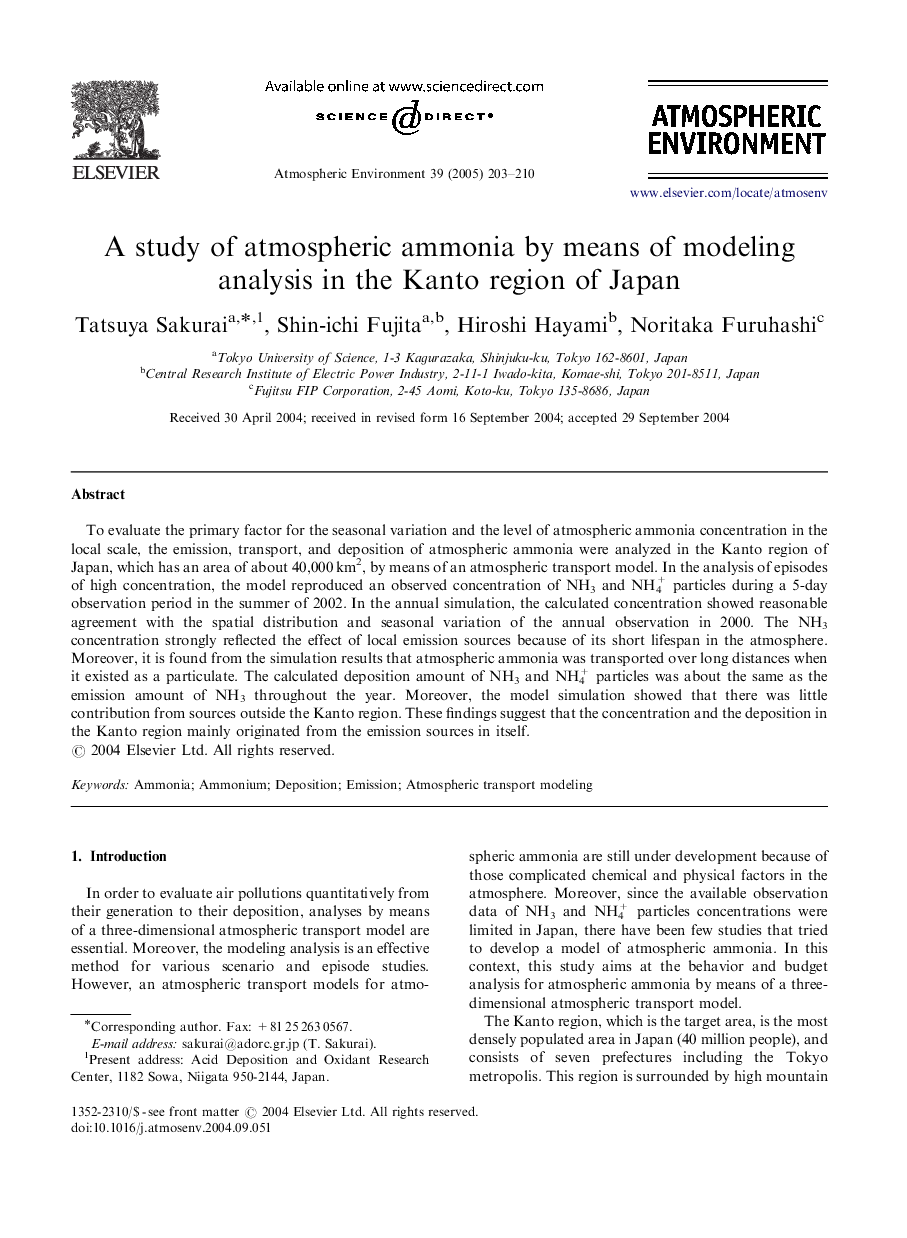| Article ID | Journal | Published Year | Pages | File Type |
|---|---|---|---|---|
| 9458855 | Atmospheric Environment | 2005 | 8 Pages |
Abstract
To evaluate the primary factor for the seasonal variation and the level of atmospheric ammonia concentration in the local scale, the emission, transport, and deposition of atmospheric ammonia were analyzed in the Kanto region of Japan, which has an area of about 40,000Â km2, by means of an atmospheric transport model. In the analysis of episodes of high concentration, the model reproduced an observed concentration of NH3 and NH4+ particles during a 5-day observation period in the summer of 2002. In the annual simulation, the calculated concentration showed reasonable agreement with the spatial distribution and seasonal variation of the annual observation in 2000. The NH3 concentration strongly reflected the effect of local emission sources because of its short lifespan in the atmosphere. Moreover, it is found from the simulation results that atmospheric ammonia was transported over long distances when it existed as a particulate. The calculated deposition amount of NH3 and NH4+ particles was about the same as the emission amount of NH3 throughout the year. Moreover, the model simulation showed that there was little contribution from sources outside the Kanto region. These findings suggest that the concentration and the deposition in the Kanto region mainly originated from the emission sources in itself.
Keywords
Related Topics
Physical Sciences and Engineering
Earth and Planetary Sciences
Atmospheric Science
Authors
Tatsuya Sakurai, Shin-ichi Fujita, Hiroshi Hayami, Noritaka Furuhashi,
